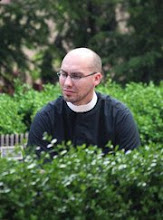TODAY'S READING: TANSFORMING WORLDVIEWS
It is a question we have all wrestled with many times. Hiebert gives three possible answers: (1) a change of belief; (2) a change of behavior; (3) a change of worldview.
Asked another way, "What must take place for a conversion to be genuine?"
Hiebert suggests, Conversion to Christ must encompass all three levels: behavior, belief, and the worldview that underlies these. Christians should live differently because they are Christians. However, if their behavior is based primarily on traditional rather than Christian beliefs it becomes pagan ritual. Conversion must involve a transformation of beliefs, but if it is a change only of beliefs and not of behavior, it is false faith (James 2). Conversion may include a change in beliefs and behavior, but if the worldview is not transformed, in the long run the gospel is subverted and the result is a syncretistic Christo-paganism, which has the form of Christianity but not its essence. Christianity becomes a new magic and a new, subtler form of idolatry. If behavioral change was the focus of the mission movement in the nineteenth century, and changed beliefs its focus in the twentieth century, then transforming worldviews must be its central task in the twenty-first century (11-12).
In the first section of the book (chapters 1-4) Hiebert gives a philosophical foundation for understanding "worldview." In the second section (chapters 5-9) he traces the development of worldviews from "Small-Scale Oral Societies" to "Peasant Worldviews" to "The Modern Worldview" to "Postmodernity" to the "Glocal Worldview."
Chapter Ten is Hiebert's proposal for a "Biblical Worldview" and Chapter Eleven is his discussion of "Transforming World Views." (if you don't have time to read the whole book, read the intro and then chapters 10-11 to get the thrust of his proposal without all the background).
So having read the book in light of the quote from the introduction above, the first thing I wonder is if Hiebert is really making a case for entire-sanctification. Yes, technically entire sanctification is a transformation of the heart, but does that transformation not necessarily yield a transformed worldview. Is not the holiness of life as important of the holiness of heart?
If this is the case, that conversion is not just a new belief that results in new behavior, but also requires a "second work of grace" by which one's entire worldview is transformed, then we holiness folk ought to be on the leading edge this transformed worldview. We simply must ask the logical evaluative question: how is that working out for us?
Lets not take much time with new converts, we all know holiness takes time. Lets look straight to the old-time, mature and entirely-sanctified saints in our churches. Do their lives give evidence to having a transformed worldview? Do they look at the world differently? Are their values, and priorities and allegiances notably different than all the good people in our communities? Are our churches notably different in the way they approach life than the rest of the world? Do our churches present a radically different kingdom ethos than the secular world of individualism, materialism, consumerism and nationalism?
I was watching facebook the other day when a mentor of mine (a female) posted this update:
What would you have done when the strange man you just met because you are giving him a ride into town says, "I have just gotten out of a psychiatric hospital. I was there because I pleaded innocent by reasons of insanity to the two felonies of kidnapping and rape."
Dee gets it. That is a transformed worldview. Maybe it was dangerous, but I think we are called to take up our crosses - that sounds pretty dangerous to me.
O that I had that kind of faith. O that my worldview might be transformed.


